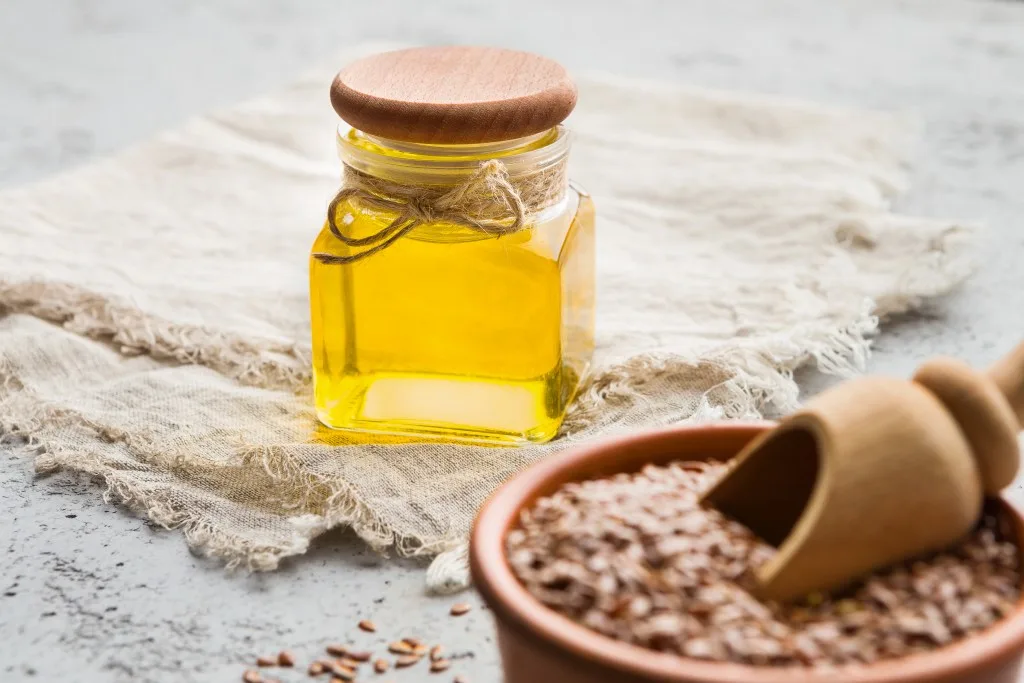If you enjoy woodworking projects, you may consider using linseed oil for the finish. The fact that it’s eco-friendly and non-toxic makes it an attractive option.
It also does a fantastic job of bringing out the natural beauty of the wood. However, while this is a popular option for woodworking, it’s not always the best idea.
There are a handful of reasons why we think you should avoid linseed oil for your projects. Let’s take a look!
What Is Linseed Oil?
Linseed oil often goes by the name flaxseed oil and is a non-toxic and eco-friendly oil. You can typically find it at local retail hardware stores. The oil is extracted from flaxseeds and has a variety of uses, such as in stains, paints, and many different woodworking projects.
There are so many great projects linseed oil can help you tackle. However, there are some instances where you’ll want to avoid it.
What Applications Do You Use Linseed Oil For?
Linseed is most commonly used as a preservative in woodworking and concrete projects. It’s a key ingredient in varnishes, stains, and paints. You’ll also frequently see linseed oil used in soaps, linoleum production, and inks.
When linseed oil is edible, you will probably see it labeled flax oil. You’ll often see this oil used in Europe with dishes like potatoes and quark. Many see it as a delicacy, enhancing the flavor of a normally bland dish like quark.
Pro Tip: Want to find wood for a project or campfire? Trying looking at these 5 Places to Find Firewood Near You.

5 Reasons to Avoid Linseed Oil
While many woodworkers run to linseed oil for their projects, there are five reasons you might want to think twice before using it. Let’s look at our five reasons you should avoid linseed oil!
1. It Can Catch on Fire
There have been several reports of linseed oil spontaneously combusting. Shannon Priddy’s home in Gaithersburg, Md., was destroyed because rags soaked in linseed oil spontaneously combusted under her deck. If you or anyone working on a project around your house isn’t careful, you could also become a victim.
Donnie Boyd, a county fire inspector, explained the process. “It actually heats up as it dries. It’s a chemical reaction. So it spontaneously combusts once it reaches its ignition temperature.”
Once it ignites, it quickly spreads to any nearby fuel source. In many cases, the situation is already out of control before you even notice it.
2. It Has No UV Resistance
You want to protect the wood you use for your woodworking projects. However, linseed oil has no protection from ultraviolet light. Over time, this can result in the wood fibers drying and cracking. This can lead to a host of issues but will almost always drastically reduce the life of the wood.
You should avoid putting any furniture or wood projects in direct sunlight if you apply linseed oil to them. Teak and Danish oils will provide better results if your project regularly sits in direct sunlight. They both have the necessary UV pigments to offer protection from harsh UV rays.
3. It Needs to Be Reapplied Often
If you want to keep your wood in good condition, especially butcher block and wooden utensils, you’ll need to reapply the coating regularly. Continually wetting and drying your wood surfaces can cause the oils to fade away and dry, including linseed oil. Once your wood starts to crack, it’s too late. The wood will be completely ruined, and you’ll need to replace it. While replacing a small DIY craft project is one thing, replacing a family heirloom is quite another.

4. It Yellows Over Time
One of the most prominent reasons for not using linseed oil is how it turns yellow over time. While it depends on the wood you use (maple being the worst), many types of wood will eventually experience this yellowing.
This is typically the result of changes in temperature, humidity, impurities in the oil, and a host of other reasons. Ensure you get the highest quality linseed oil possible if you want to avoid yellowing on your projects.
5. It Can Grow Mildew
Linseed oil provides no waterproofing to the wood surface. As a result, this oil can create a hospitable environment for mold and mildew to grow.
To avoid the growth of mold and mildew, stay on top of maintaining your wood. You can reduce the chances of mold and mildew growth by applying a high-quality stain on top of the coating of linseed oil. However, you should always keep an eye on any potential mold or mildew growth.
Pro Tip: Use our guide on The Best (and Worst) Wood for Burning to get your fire started with ease.
Is Linseed Oil Worth It for Wood Projects?
Linseed oil has been used in many different projects for many years. It can be great for your projects, but you must dispose of it safely. If you decide to use linseed oil, never use boiled linseed oil on anything that involves food.
If you take the proper precautions, linseed oil is a great option for your next project. However, Pure Tung Oil is quickly becoming the oil of choice for many woodworkers.
Discover the Best Free Camping Across the USA
To be honest with you, we hate paying for camping. There are so many free campsites in America (with complete privacy).
You should give it a try!
As a matter of fact, these free campsites are yours. Every time you pay federal taxes, you’re contributing to these lands.
Become a FREE CAMPING INSIDER and join the 100,000 campers that love to score the best site!
We’ll send you the 50 Best Free Campsites in the USA (one per state). Access the list by submitting your email below: